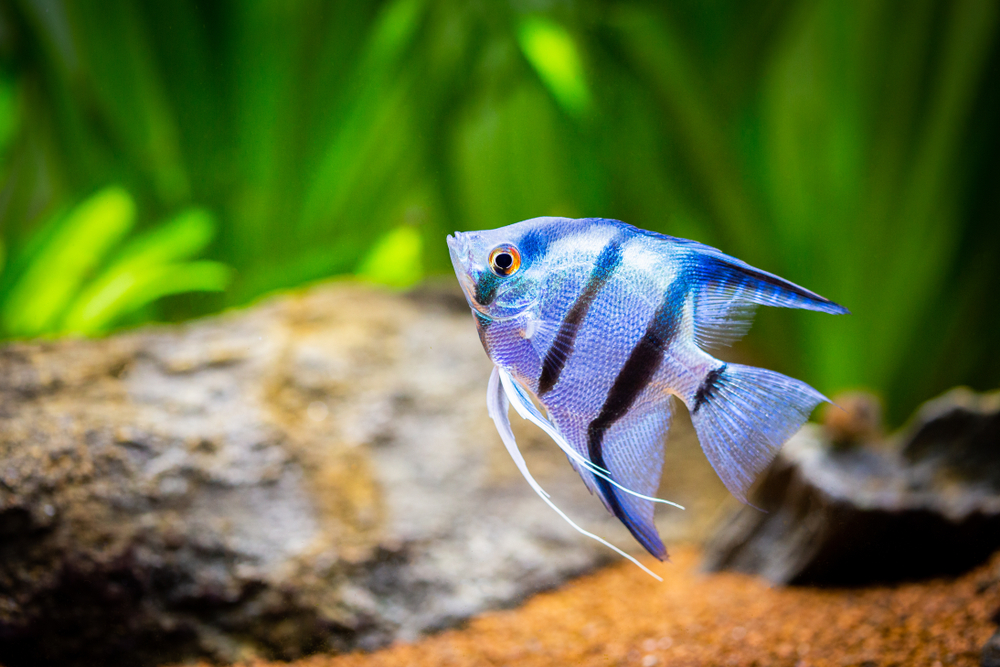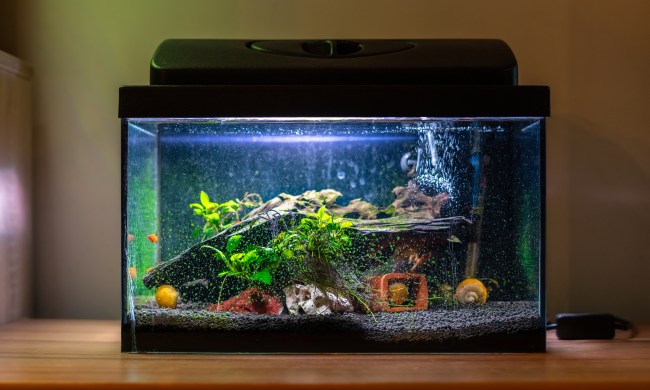Whether you’ve decided to set up a fish tank for the calming effect it has on your stressful life or because you’re looking for a furless pet for your kids to care for, you’re in good company. More than 13 million American households keep aquarium fish as household pets, making them the third-most-popular pet behind dogs and cats.
Keeping fish in an aquarium might sound like an easier job than caring for furry animals every day, but it does come with a lot of responsibility. Setting up the tank and making sure the environment is well suited for its inhabitants can be tricky for even the most experienced aquarium owners.
So, let’s keep things simple. If you’re just getting started, these are the best fish for first-timers.
Goldfish
Say what you want about the common goldfish, but there’s no denying they are hardy fish that are super easy to care for. Where many pet fish are sensitive to pH and water changes, goldfish are extremely forgiving. But be warned: That cute little fish you bring home from the pet store can reach an average length of between 12 and 14 inches as an adult and need 30 gallons of water per fish. Due to their eating habits, it’s best to keep them in an aquarium by themselves.
Guppies
Beginners won’t have any trouble caring for guppies, either. These hardy fish come in a variety of colors and reproduce quickly, so it’s best to ask the pet store to give you all males (more colorful) or all females. Guppies like to travel in groups, so plan to keep at least three for each 5 gallons of water. Good tank mates for guppies include platies, mollies, cory catfish, and cardinal tetras.

Tetras
There are 31 types of tetras, all of which add color to your tank and are easy to care for. One of the most popular varieties is the neon tetra, which sports a vibrant blue stripe across its body and a bold splash of red near its tail. These small fish are happiest in schools of at least six for a 5-gallon tank. They are peaceful fish who play well with others, especially guppies, which like to swim near the top of the tank, and cory catfish, which hug the bottom.
Swordfish
In addition to being hardy and easy to care for, swordfish are popular because of the unique extension on their tail that looks like a sword. Common colors include red, orange, and black. They prefer to live in groups; however, they are active swimmers. One swordfish needs at least 15 gallons of water. If you plan to keep several, plan to add 5 gallons for each additional swordfish. These peaceful fish do well with others such as tetras and angelfish, which also enjoy swimming in the middle of the tank.
Bettas
Also known as Siamese fighting fish, bettas are a striking addition to any beginner’s tank. The males have impressive fins and come in a variety of colors. These extremely territorial fish like to swim near the top of the tank. They are best kept by themselves, although they can coexist with guppies and tetras, which prefer the middle of the tank, and cory catfish, which live on the bottom.

Angelfish
Looking for something a bit more exotic? If you have a larger tank (55-plus gallons), consider adding an angelfish. As with bettas, you’ll want to keep only one in the tank to avoid territorial fighting. They don’t have to be the only fish in the tank, though. Angelfish live peacefully with many of the other fish species we’ve mentioned here, especially tetras, mollies, and corydoras.
Kuhli loaches
This little snakelike fish will add an element of intrigue to your tank — and keep it clean in the process! Be sure to house them in groups of five or six as they are shy and believe there’s safety in numbers. They’ll hide behind your rocks and greenery during the day, coming out to explore only at night. And even though they scavenge for leftovers on the bottom of the tank, you’ll want to feed them community pellets or bloodworms to make sure they have enough to eat.
Corydoras
Cory catfish are another species that like to travel in groups of six or more while scavenging for food on the bottom of your tank. As with kuhli loaches, you’ll have to feed them fish food that will sink to the bottom. They’ll live peacefully with most other non-aggressive community fish, including kuhli loaches.
A few tips for beginners.…
The key to keeping healthy fish is to start with a firm foundation. Make sure you choose the right-sized tank and find the right to place it. Research the fish you want to keep and set up your tank according to their substrate and greenery preferences. Make sure the water is properly conditioned and has been set up for at least 24–48 hours before you add fish. And don’t overcrowd your tank. Start with a few varieties from our list, then add compatible fish gradually as your family grows comfortable with their new responsibilities as pet owners. As your fish become comfortable in their new surroundings, your family will learn their personalities and enjoy watching their underwater antics.


